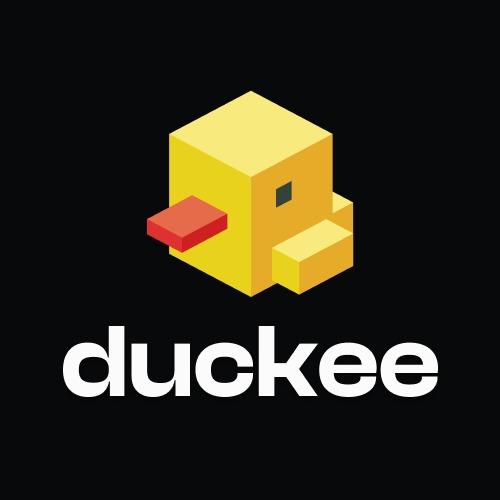Duckee
Duckee is the platform for creators where you can discover, create and monetize AI artworks/prompts based on Duckee's derivable NFT generation system.
Created on 1st March 2023
•
Duckee
Duckee is the platform for creators where you can discover, create and monetize AI artworks/prompts based on Duckee's derivable NFT generation system.
The problem Duckee solves
As the popularity of generative AI technology accelerates, starting with Stable Diffusion, more and more people are using text-to-image to generate AI artworks by entering various prompts using DALL-E, Midjourney, and Stable Diffusion. The quality and desired results of AI creations entirely depend on the quality of prompts, which is why the importance of prompt engineering is emerging. Due to the significance of the prompts, some marketplaces specialize in trading prompts called Promptbase and Promptsea. Despite the rapid mass adoption of generative AI, there are evident problems that we want to highlight.
First is the total absence of a dedicated community for AI creations. Currently, people are forming communities based on Discord and Reddit. If you look into the case of Midjourney, despite having more than 1.2 million community users, they rely on Discord. The community utilizes Discord bot for API integration, and its limit is evident for newcomers to onboard, hard to achieve, and manage their artwork. Here, Duckee would be the best place for AI creators to gather around and share their artwork. In the 'Explore' tab, you can discover various artists' collectibles based on keywords with seamless UX. While exploring, easily find your favorite artist and follow their collections.
The second issue we want to address the most is the copyright issue of the AI prompts. Due to the lack of a system and ambiguity in the specification of copyright issues, it is challenging to track secondary creations. In Duckee, we want to bring AI creations and prompts on-chain, making it technologically possible for anyone to digitize their copyright and track secondary outcomes using a derivable NFT system.
To summarize, Duckee is the world's first platform for AI creators to explore, generate and tokenize their artworks.
Challenges we ran into
-
As a web2 mobile developer, I am always eager to develop user-friendly mobile products in the web3 field as well. While participating in the Flow Hackathon, I chose the Android platform among hybrid, iOS, and aOS as I was only given a short period of time. The first challenge was that there was no Android SDK to refer to. Even the most basic login for all apps was not easy. It took me a while to realize that the officially supported SDK from Flow was quite outdated, and it wasn't documented anywhere, but rather annotated by a random developer like me in the code. That’s why I spent a long time thinking about things I wish I had known beforehand. Not just the wallet integration but putting social login took some time as well.
In addition, there were very few mobile native SDKs supported, so I wish more diverse SDKs can be supported in the future, including third parties. For iOS, there was a sample code, but the app crashed immediately after I booted, so it wasn't really helpful. So the challenge was that there was no reference at all.
-
When trying to connect the wallet with the app, at first, I tried to do wallet discovery and transaction signing in a webpage like I used to do in Ethereum development, but it was a new challenge for me as a developer to see the flow's unique wallet less onboarding and implement hybrid custody auth-based on it, and to use FCL.js for the wallet linking part to connect the user's wallet. Since it was a new approach, it took a lot of research time in the beginning, but in the end, it was a good hackathon experience because I was able to develop a final product that is secure and convenient user experience in terms of UX.
Tracks Applied (2)
